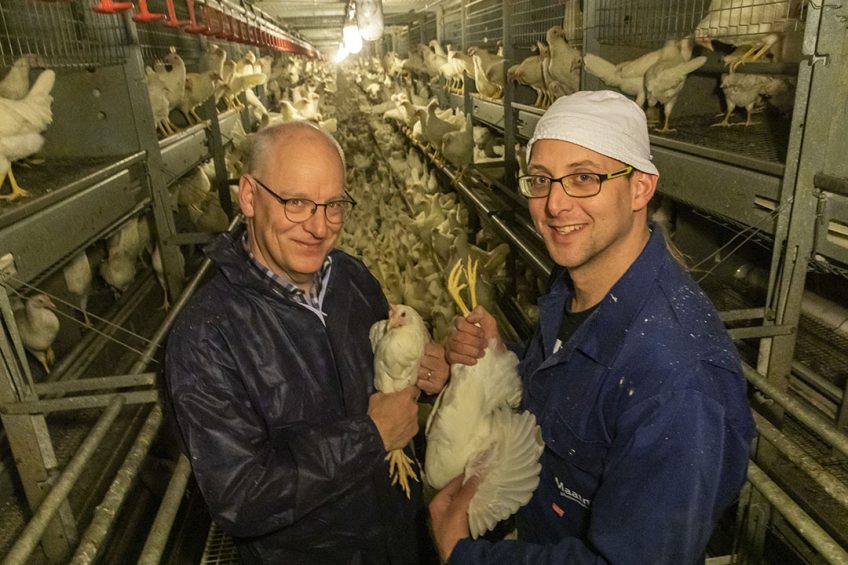Maintaining feather cover in laying hens

Poultry producers are prepared to take ownership of feather cover and develop Feather Cover Action Plans (FCAP) to prevent injurious pecking (IP).
Results from a 2-year study by the UK’s Laying Hen Welfare Forum (LHWF) show that a new approach – known as Motivational Interviewing (MI) – has encouraged farmers to take ownership of the issue. The results are important as one of the overarching aims of the LHWF work is to support producers to manage IP and maintain good feather cover so that the industry can possibly move to managing flocks with intact beaks.
Funded by Defra, through the European Innovation Partnership, the study covered 29 poultry farms, seen as representative of the UK’s laying hen sector. Of these, 27 flocks had been beak treated by infa-red technology at day old at the hatchery, while the other 2 flocks had their beaks intact. The results found that a substantial 80% of producers made changes to their management and added additional resources, with 90% of producers of free-range and half of those using enriched cages making changes.
High level of behaviour change achieved
Principal report authors Claire Weeks, from the University of Bristol and Paula Baker from the LWHF, said the exceptionally high level of behaviour change achieved was the more remarkable as producers chose to add up to 9 changes to their FCAP. While some were inexpensive, such as providing rope, plastic objects or balls in houses, others were capital investments like verandas and/or time consuming such as planting trees, renewing and strategically placing artificial shelters to encourage ranging, continually replenishing lucerne or removed capped litter.
Preventing excessive feather pecking behaviour
Beak trimming has been the go to solution to prevent feather pecking in chickens and turkeys. However, since 2018 this is no longer allowed in the Netherlands. Scientists from Wageningen University are looking into improving chicken welfare by finding alternative measures to combat injurious pecking behaviour.
Reflecting on the value of their FCAP, producers recognised that being part of the project not only raised awareness of injurious pecking and the importance of maintaining good feather cover but also motivated them to make changes. Half of the producers felt their FCAP had been successful in reducing IP within their flocks. Barriers identified were:
- Financial constraints
- Lack of time
- Having insufficient information to decide whether the change, given the cost, would bring sufficient benefit
- Housing systems meant that some changes could not be accommodated.
Preventing pecking
Andrew Joret, LHWF chairman, said the project was a major step forward in the prevention of injurious pecking: “We now have some very robust data which we believe will be of great value to producers.” The report’s authors recommend that facilitation training is made available to enable successful rollout of FCAP nationwide. They also suggest that grants are made available to producers and stockpersons to cover training and that financial incentives are provided to recognise those who maintain a well-feathered flock. It is also suggested that an “Innovation Fund” is made available to support producer-led trials of innovative practices where moderate infrastructure or equipment changes are needed.
The report can be found here.













